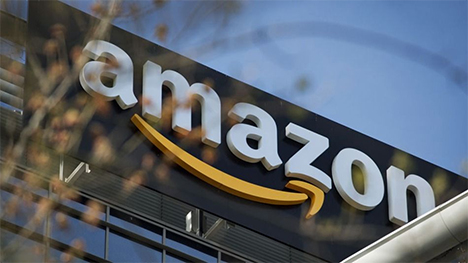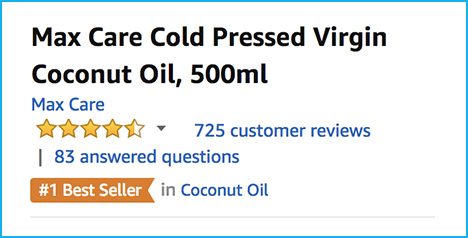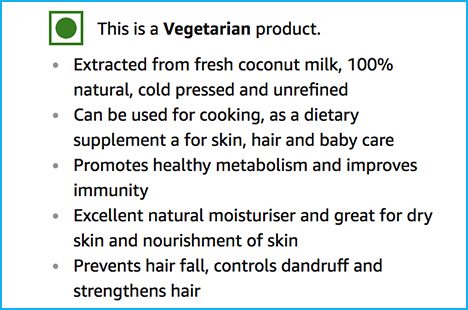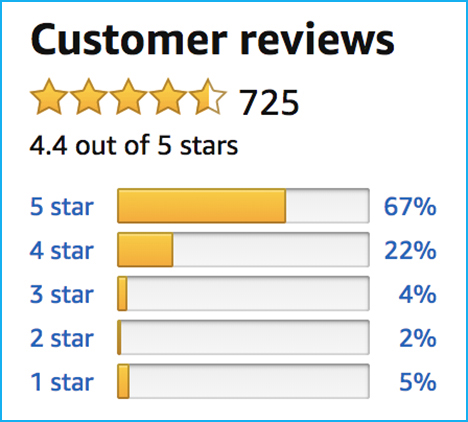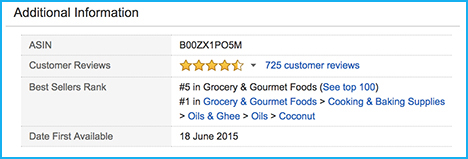Useful Tips to Improve Amazon Sales Rank
Are you an online seller struggling to rank your product high on Amazon and boost your sales? Then you’ve come to the right place. When you’re an online merchant, your Amazon sales rank is very important to revenue. Improving your Amazon sales rank gets your products in front of potential buyers, and products that are showcased on the first page of search results sell the best.
What is Amazon Sales Rank?
Amazon sales rank or Amazon Best Seller Ranking (BSR) is a factor that determines how well your products are selling when compared to other products in the same category, whilst each product is being ranked using a bell curve.
For instance, if you’re selling laptops under Mobiles & Computers, then your laptops will be graded against all other electronics in the same category. This provides you and other sellers a clear opinion on what’s popular and what’s not.
The sales rank of a product is usually depicted by a number, like in school grading system. Lesser the number, the better it is.
Finally, the best seller rank for each product is updated on an hourly basis, so it’s better not to concern too much about slight changes in the position of your product rankings. It happens.
Most first-page Amazon sellers would assume that they got there because of their high sales record. This happens as the products on the first search results page are more likely to be viewed by customers and therefore has more chances of being purchased, which in turn helps it appear on top of Amazon’s search results and adds to their higher Amazon sales rank.
Well, This is How Amazon’s Algorithm (A9) Works
Amazon’s product search algorithm (A9) is entirely different from that of Google’s. When a user types in a keyword for product search, results are derived through a two-stage process. First, it brings out relevant products from the list and then the products with more relevancies are ranked accordingly.
Amazon wants to increase returns per customer. They continuously assess their algorithms with the help of human judgments, performance metrics, key business metrics and programmatic analysis.
Core Principles of Amazon’s Algorithm
The A9 algorithm consists of three crucial ranking factors:
1. Relevancy – Aspects that instruct the algorithm when to look at your product/item for a particular search. To rank better, your product/item needs to be relevant.
2. Customer fulfillment and retention – Aspects that improve consumer retention including order defect rate (ODR) and customer feedback. Make your customers happy in order to improve your revenue. More the number of good seller reviews and positive feedback you get, the more you can improve your sales.
3. Conversion rate – Aspects that A9 has witnessed to have an impression on conversion rates that includes image quality, product reviews, and price. It’s essential for sellers to set competitive prices to keep up a better conversion rate.
Key Amazon Product Ranking Factors
Below are some of the crucial aspects that Amazon’s A9 algorithms will look for when ranking your products in search results.
Relevancy Factors
1. Title
A great product title can help improve your conversion rate. An ideal Amazon product title must be under 200 words, contain necessary keywords and easy to read. Below is a good example of how a product title should be.
2. Bulletins
Showing the detailed product features in bulletins that includes necessary keywords (as shown below) will help improve conversion rate.
3. Product Description
A production description is where you go detailed on the product features and insert the keywords. The time and effort you invest in getting the right product description will help improve your client engagement and order conversion rate.
4. Mention Brand Names
If allowed, you should always mention the brand name in the product title. This helps the customers searching for products of a specific brand.
5. Specifications
This is the part where you have to list all the physical and technical info about your product including color, size, shipping weight, etc. By filling out this section you’re showing Amazon that you’re conscientious when it comes to details.
6. Choose the right Category & Sub-Category
When you’re enlisting your products, make sure to choose the most relevant product category for your item.
7. Include Search Terms
Amazon provides you with five fields to enter the search terms that you want to be linked to your listed item. You can use Seller Prime’s free Keyword Search tool to help you.
Below are A9 algorithm’s best practices for choosing the right keywords.
- Do not provide irrelevant, misleading, or inaccurate information.
- Do not provide overinflated lengthy content. Abide by the rules that are predefined for various fields.
- Do not provide excess information that’s already been covered in other areas such as product title, product description, author, brand, bulletins, etc.
- Use just a single space to separate different keywords. Do not use commas, carets or semicolons.
- When providing multiple words for a search term, enter them in the most sensible order.
- Do not use temporary terms such as new, available now, on sale, etc.
- Do not include general misspellings of the brand or product name.
- Do not mention subjective claims such as great quality, amazing product, etc.
- Do not include offensive or abusive tone or language.
- Abbreviations, topic or key characters (for movies, books etc.), and alternate names can be included as search terms or keywords.
Customer Fulfillment and Retention
1. Negative Seller Feedback
Each and every negative feedback from customer reckons against you as in terms of conversion rates. Your client feedback rating is a crucial factor as well for your opportunities in Buy Box.
2. In-Stock Rate
Inefficient stock management would ensue in popular items going unavailable for sale. Amazon prefers sellers who maintain a good in-stock rate to minimize pre-fulfillment cancellations and refunds.
3. Order Processing Speed
In order to be a thriving seller on Amazon, you need to ship the orders fast and precise. You Amazon seller rank would improve when you’re efficient in order processing.
4. Perfect Order Percentage (POP)
Amazon sellers who have processed a higher amount of perfect orders will rank better than those who go through order issues.
5. Exit Rate
Simply put, exit rate is same as the bounce rate as referred to in Google Analytics. Exit rate is the number of times a user looks through your product listing and then exit to view other listings. Product listings with a minimum exit rate will rank on top and have more conversion rates.
6. Order Defect Rate (ODR)
An order defect occurs when a customer causes a claim against his/her order. Defects comprise of shipment issues, negative buyer feedback, chargebacks and A-to-Z Guarantee claims. Note, if the negative feedback is later withdrawn by the customer, it will not affect your order defect rate. So, it’s worth attempting to settle any problems that might happen.
Conversion Rate Factors
Amazon’s best seller rank (BSR) is one of the most significant ranking factors. Higher ranking = high conversion rates and high conversion rates = higher ranking!
2. Answered Questions
Customer questions that are answered will be showcased at the top of the Customer Q&A part and play a vital role is conversion rates.
3. Customer Reviews
The ratio between the total number of customer reviews your product receive versus a total number of positive reviews is a crucial ranking factor.
4. Price
While being one of the most vital Buy Box aspects, your products’ price also greatly effects your sales and order conversion rates.
5. Image Quality and Size
Sellers ought to comply with Amazon’s guidelines to make sure that their product listings are not stamped down. By using high-quality images with a minimum resolution of 1000×1000 pixels you’ll be equipped with zoom feature which lets your customers look at your product images in detail.
6. Bounce Rate and Time-On-Page
The total amount of time a visitor spends in your product listing will indicate Amazon how engaged visitors are in your listings.
7. Product Listing Efficiency
The more comprehensive your product listing, the more beneficial it is. Try to fill out all the fields in the product listing setup page.
8. Parent-Child Products
With the help of Amazon’s parent-child products feature you’ll lead your clients to a single product page. You can increase your probabilities of getting more customer feedbacks with this feature.
Summary
To achieve a higher Amazon best seller rank, you have to follow Amazon’s product listing guidelines. By providing thorough and relevant details about your product listing, you can improve the visibility and conversion rate of your products.
You have to make sure that your products are priced competitively on a regular basis. Free tools and software that are available on Amazon’s very own SellerPrime.com can help automate your product prices as well as to help improve your best seller ranking, conversion rates, and revenue. For more insights on improving Amazon Sales Rank watch the video below.
Tags: amazon, business, e-commerce, tips & tricks



